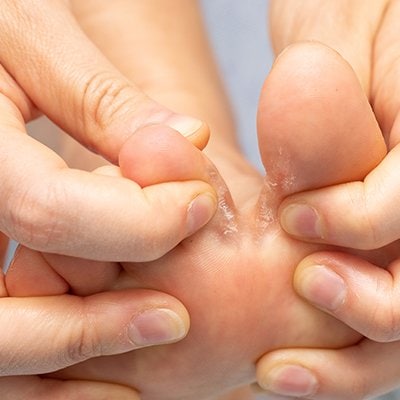Athlete's Foot

The term “athlete’s foot” can be very misleading because you don’t have to be an athlete to suffer from this condition. Athlete’s foot is caused by a fungal infection that manifests in a scaly, red rash on the foot that itches, especially at night. Blisters or ulcers may also appear. Athlete’s foot can affect one or both feet and can spread to your hands if you scratch or pick the infection.
Having sweaty feet confined in tight-fitting shoes or coming into contact with someone who has the conditions. Communal showers, locker rooms, and pool decks are common places where the infection can be contracted if you are not taking precautions, like wearing shower shoes.
You are at an increased risk of athlete’s foot if you’re:
- Male
- Wear damp socks or tight-fitting shoes
- Share mats, rugs, bed linens, clothes or shoes with someone who has an infection
- Walk barefoot in public areas, like locker rooms, saunas, swimming pools, and communal showers
- Have a weakened immune system’
Prevention & Treatment
There are over-the-counter creams that can usually effectively treat and eliminate the infection within two weeks.
You can also prevent the spread of Athlete’s foot by wearing sandals in public locker rooms and around swimming areas. Be sure to maintain clean showers and floors at home where you frequently walk barefoot and cover your feet with socks or shoes until the infection has dissipated. Also, keep your feet clean and dry if you choose to wear socks and shoes for long periods of time.
Don’t forget to continually disinfect your footwear to ensure you will not accidentally reinfect yourself.
When To Seek Care
If these treatments don’t work, or if you have increasing pain, fever, swelling of the foot, blisters or open sores, it’s time to seek treatment for a possible bacterial infection. A more aggressive course of treatment may be prescribed by a podiatrist.